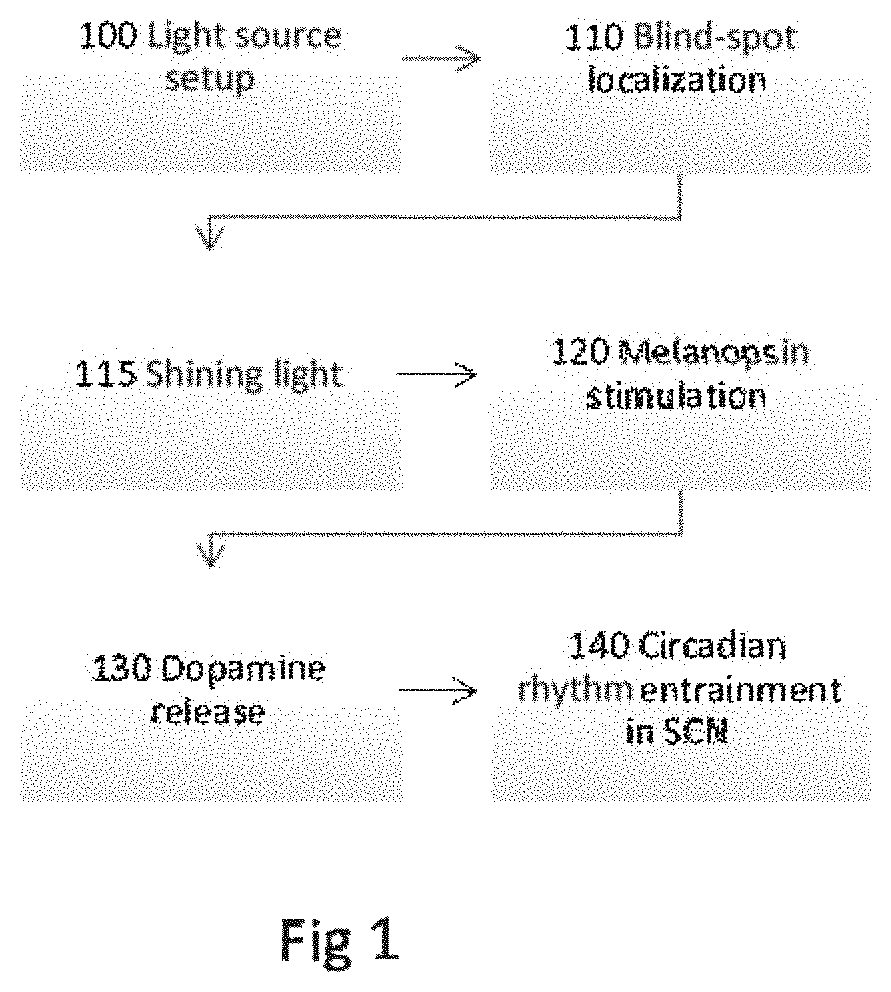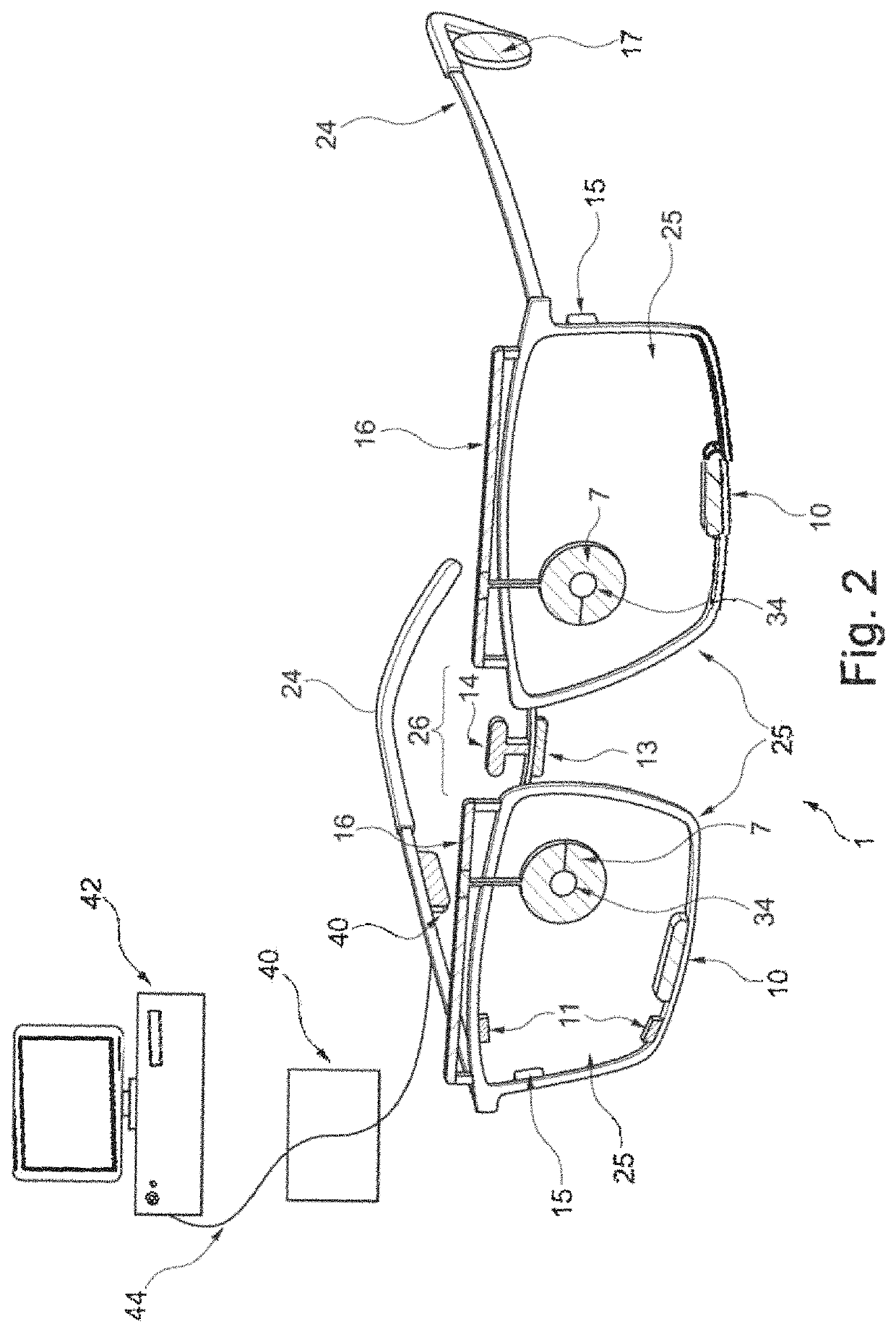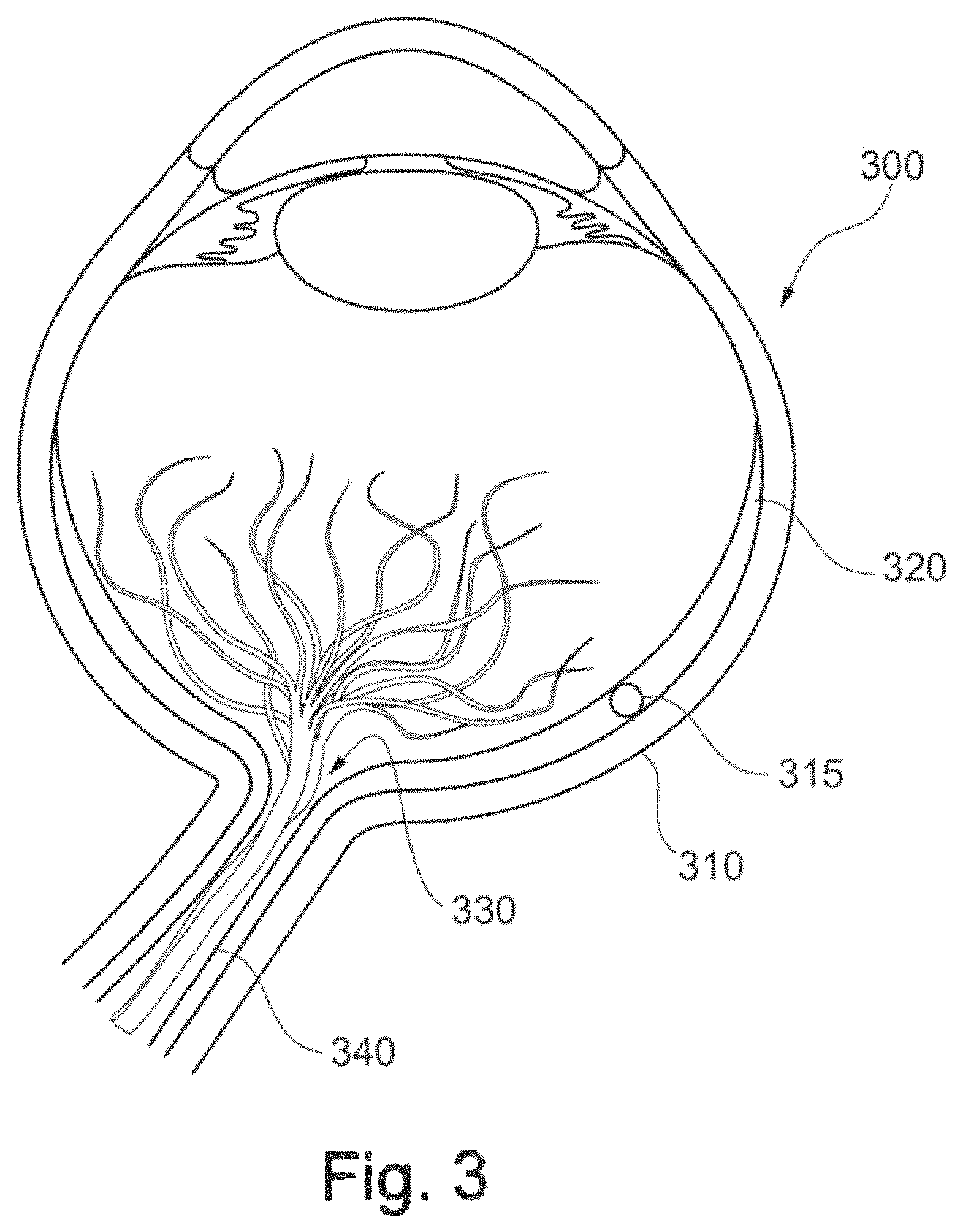System and method to stimulate the optic nerve
a technology of optic nerve and system, applied in the field of system and method to stimulate the optic nerve, can solve the problems of not including a method to distinguish between non-image forming receptors and image-forming light receptors in the eye, and the device does not include a method to achieve this effect, and the method of disclosure is limited
- Summary
- Abstract
- Description
- Claims
- Application Information
AI Technical Summary
Benefits of technology
Problems solved by technology
Method used
Image
Examples
examples
Myopia
[0075]The method and system may be used in myopia prevention and / or reduction. It is known that myopia occurs when the eyeball 310 is too long, relative to the focusing power of the cornea and lens of the eye 300. This additional length of the eyeball 310 causes light rays to focus at a point in front of the retina 320, rather than directly on the surface of the retina 320. An adapted light therapy reduces the risk of myopia onset by acting positively on the production cycle of dopamine. Dopamine is a retinal neurotransmitter associated with light adaptation. Dopamine has an impact on the eye length and thus on myopia. Recent research shows that dopaminergic cells are linked to intrinsically photosensitive retinal ganglion cells and that they are regulated by the chronobiologic blue light at around 480 nm. This specific light is thought activate endogenous dopamine production, while a lack of this light (spectrum and / or light level) may inhibit dopamine production. The inhibit...
PUM
 Login to View More
Login to View More Abstract
Description
Claims
Application Information
 Login to View More
Login to View More - R&D
- Intellectual Property
- Life Sciences
- Materials
- Tech Scout
- Unparalleled Data Quality
- Higher Quality Content
- 60% Fewer Hallucinations
Browse by: Latest US Patents, China's latest patents, Technical Efficacy Thesaurus, Application Domain, Technology Topic, Popular Technical Reports.
© 2025 PatSnap. All rights reserved.Legal|Privacy policy|Modern Slavery Act Transparency Statement|Sitemap|About US| Contact US: help@patsnap.com



